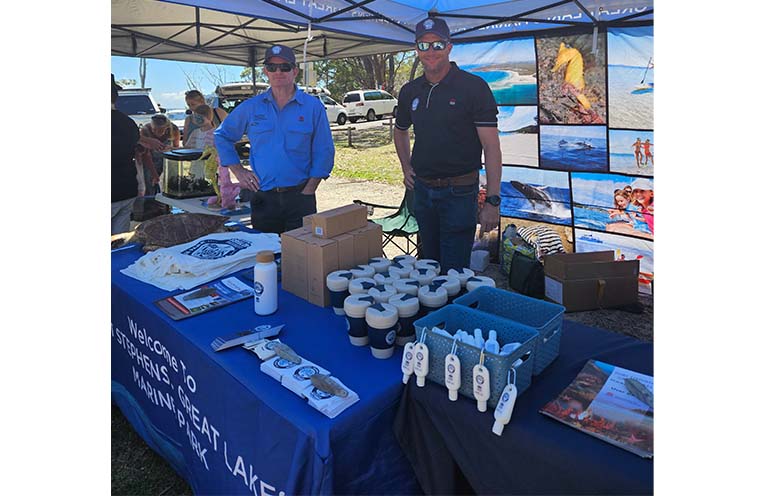
LOCALS and visitors came together to celebrate the 40th anniversary of the Fly Point – Halifax Park marine protected area in Nelson Bay on Sunday 3 December.
One of the most visited dive sites in NSW, the Fly Point marine protected area is home to some of the east coast’s most extensive sponge gardens, which attract a wide variety of marine fish and invertebrates.
 Advertise with News of The Area today.
Advertise with News of The Area today.It’s worth it for your business.
Message us.
Phone us – (02) 4981 8882.
Email us – media@newsofthearea.com.au
The area was declared an Aquatic Reserve in 1983, before being incorporated into the Fly Point – Corrie Island sanctuary zone as part of the Port Stephens – Great Lakes Marine Park in 2007.
The two important conservation areas are linked to create a sanctuary zone of higher integrity which also protects an area of seagrass and a documented dolphin resting area.
The boundaries align with easily identifiable navigation markers.
The marine sanctuary includes an extensive rocky reef system that is covered in an extensive array of sponges, algae and corals down to depths of 30 metres.
These reefs include a series of large rocky outcrops (bommies) and rocky overhangs and extend offshore to a sandy channel occupied by stretches of seagrass beds.
Snorkelers and divers can see a diverse range of fish such as seahorses, pipefish, gurnards and anglerfishes found hiding among the various different habitats.
Large schools of important fishery species such as snapper, bream, luderick and kingfish can be found in different areas of the reserve.
The location is a known hotspot for nudibranchs (colourful sea slugs) which can be found living on sponges, bryozoans, algae and corals.
Each summer, as the water warms up and the region is influenced by the East Australian Current, juvenile tropical fish and invertebrates appear.
These include fishes such as butterfly fish, damselfish, grasses, and tropical invertebrates such as squat lobsters and cowrie shells.
Sea Shelter, EcoNetwork Port Stephens and the NSW Department of Primary Industries were among information stalls at the event which celebrated the unique environment of the Fly Point marine sanctuary over the weekend, where families enjoyed free entertainment as they learnt about issues such as protecting our biodiversity, and how to use the FishSmart App.
“This is just such a special place,” said Lia Pereira of Sea Shelter.
Andrew Hampstead of the Department of Primary Industries told News Of The Area, “The free FishSmart App will use the GPS on your phone to pinpoint exactly where you are in relation to the Marine Park.”
You can download the app in the Apple Store or on Google Play.
By Marian SAMPSON
